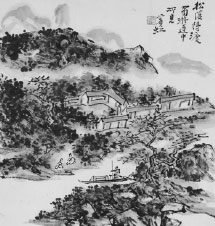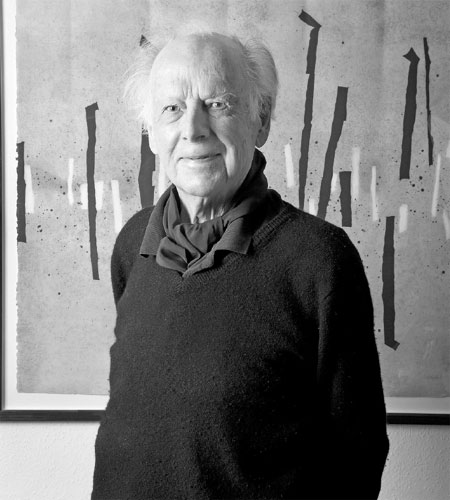Six years that shaped a life
Updated: 2014-06-08 07:31
By Cecily Liu(China Daily)
|
|||||||
A private collection charts art historian's lifelong friendships with Chinese artists, Cecily Liu reports.
Visitors to the Ashmolean Museum in Oxford can now admire what is hailed as the biggest private collection of modern Chinese art in the West. The art historian Michael Sullivan, who died last year aged 96, spent a lifetime building the collection and bequeathed it to the museum after his death.
The collection includes more than 400 pieces, more than 100 of which had never been shown to the public before.
Many of the works on show were given to Sullivan as gifts as he developed deep and lifelong friendships with many late 20th and 21st century Chinese artists, such as Zhang Daqian (1899-1983), Huang Binhong (1865-1955) and Wu Guanzhong (1919-2010). So it is appropriate that the first exhibition from the Sullivan collection is subtitled A Life of Art and Friendship. In addition to paintings, ceramic sculptures and calligraphy, there are also letters and other keepsakes that show Sullivan's deep relationships with his Chinese artist friends.
"Judging by the Chinese artists' generous gifts to Sullivan and their correspondence with him, they must have had a good feeling about him," says Shelagh Vainker, curator of Chinese art at Ashmolean Museum.
One item is a letter that artist Pang Xunqin wrote to accompany a painting he gave to Sullivan titled Tang Dancing Girl, which was among a series of traditional baimiao line drawings he made in the 1940s.
There is also a menu for a dinner in 1980, when Sullivan was invited by the Chinese Artists' Association to visit China, which was signed by Sullivan's Chinese artist friends, a number of whom he had not seen for 34 years.
"The idea is to show that, over a long period, Michael was in touch with people in China, from the 1940s right to the end of his life," Vainker says.
Sullivan was born in Toronto in 1916, and moved to Britain at the age of 3 with his family. After graduating from the University of Cambridge in 1939, he left for China to drive trucks for the International Red Cross. He lived in China for six years and in 1943 he married Wu Baohuan, a bacteriologist, who became known as Khoan Sullivan.
"He worked for the Red Cross as a way of helping in the war, but not fighting. He liked the country. He met Khoan and became familiar with Chinese art. So when he left the country, he trained formally in Chinese art," says Vainker.
In 1946 Michael and Khoan returned to London and he began his formal study of the language, history and art of China at the School of Oriental and African Studies. He later moved to the United States and completed his PhD in 1952. He then embarked on an academic career, first in the United States, then in Oxford.
Looking back at Sullivan's extraordinary life, Vainker says it was rare for someone of his generation to go to China in his early 20s, and even more unusual to live in the country for six years and to come back with a Chinese wife.
"Usually men of his background and education would get quite a straightforward job in Britain or the US. Sullivan had his own ideas and independent spirit," Vainker says.
Sullivan's life as a teacher, writer, traveler and collector was celebrated with the exhibition Michael Sullivan and Twentieth-Century Chinese Art at the National Art Museum of China in Beijing in 2012, an event to which Vainker contributed.
"The theme was Michael's life as a scholar. We included letters and photographs of his time in China, and photos of him with various artists, and photographs of him throughout his career," Vainker says.
She says preparing for the Beijing exhibition made her better understand Sullivan's vast range of experience in many parts of the world.
"His perspective is never just the perspective of an Englishman. He lived and worked in China, London, the US and Singapore, and traveled to other countries in Southeast Asia. He had a truly international perspective. He was great at making friends and keeping in touch with his friends."
Perhaps it was Sullivan's international perspective that helped him to appreciate Chinese art at a time when it was barely noticed on the international stage. As early as 1959, Sullivan published a groundbreaking book, Chinese Art in the Twentieth Century.
Contact the writer at cecily.liu@chinadaily.com.cn
Wang Shiyu contributed to this story.
|
Art historian Michael Sullivan spent a lifetime building a great collection of works from Chinese artists like Huang Binhong(below). Photos provided to China Daily |

(China Daily 06/08/2014 page4)
